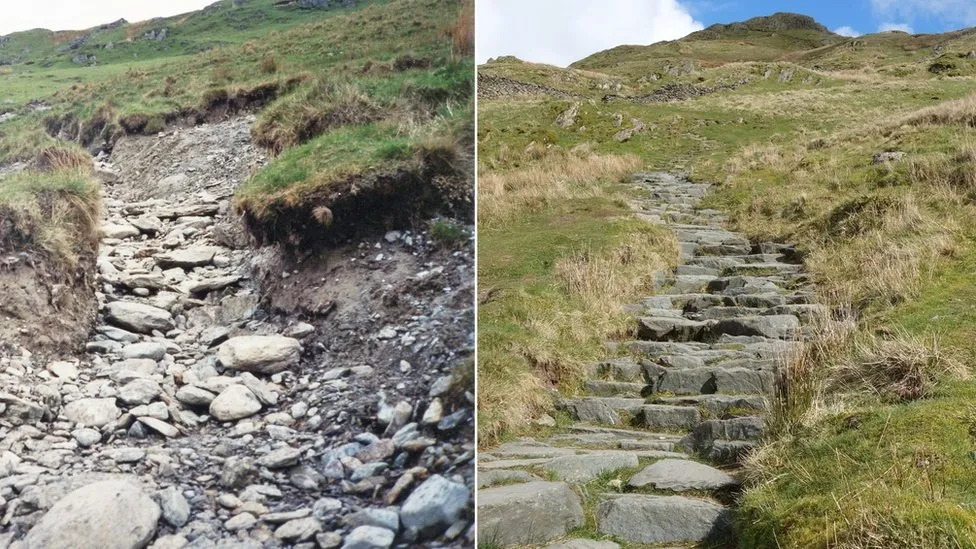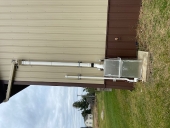
 7
7




I make a Maple Syrup instructional movie! Check it out HERE
SKIP books, get 'em while they're hot!!! Skills to Inherit Property
See me in a movie building a massive wood staircase:Low Tech Lab Movie
If you wanna get in on this nice project this summer, here's where to get your ticket: PTJ Event Ticket

 3
3




How Permies works: https://permies.com/wiki/34193/permies-works-links-threads
My projects on Skye: The tree field, Growing and landracing, perennial polycultures, "Don't dream it - be it! "












 7
7




How Permies works: https://permies.com/wiki/34193/permies-works-links-threads
My projects on Skye: The tree field, Growing and landracing, perennial polycultures, "Don't dream it - be it! "
 12
12




Visit Redhawk's soil series: https://permies.com/wiki/redhawk-soil
How permies.com works: https://permies.com/wiki/34193/permies-works-links-threads
 3
3




I make a Maple Syrup instructional movie! Check it out HERE
SKIP books, get 'em while they're hot!!! Skills to Inherit Property
See me in a movie building a massive wood staircase:Low Tech Lab Movie
 7
7




 3
3




 1
1








Chris Tully
Java developer, Handy man, Gardener
 3
3




Nails are sold by the pound, that makes sense.
Soluna Garden Farm -- Flower CSA -- plants, and cut flowers at our farm.
 4
4




paul wheaton wrote:An idea.
Two big green logs. Peeled. Parallel.
Take a thick 5 foot long green log and cut two saddles in it so it can sit on the two logs a bit steppish. When the log is snug and positioned well, put an inch and a half hole through it. Pound in some 1.5 inch dry pegs. Carve out a flat step from the top third of the log.
Repeat the last step until you have all the steps you want.
Nails are sold by the pound, that makes sense.
Soluna Garden Farm -- Flower CSA -- plants, and cut flowers at our farm.
 2
2




I make a Maple Syrup instructional movie! Check it out HERE
SKIP books, get 'em while they're hot!!! Skills to Inherit Property
See me in a movie building a massive wood staircase:Low Tech Lab Movie












 3
3




Mike Haasl wrote:
It would take half as many logs to do it the way I am proposing. And the construction could be done without tenons, saddles or any tricky joints. Just cut a bunch of logs in half lengthwise and put them together with pegs as shown below. Then again, where's the fun in that.
I like the beefy awesomeness of Paul's idea but I'm a bit worried about the time it would take to fit each saddle and then cut out the tread area. And the number of logs that would have to be prepped would be double.
Here's a pic of both designs (as I understand them). Sorry for the crappy modeling program...

How Permies works: https://permies.com/wiki/34193/permies-works-links-threads
My projects on Skye: The tree field, Growing and landracing, perennial polycultures, "Don't dream it - be it! "
 2
2




 2
2








 3
3






Moderator, Treatment Free Beekeepers group on Facebook.
https://www.facebook.com/groups/treatmentfreebeekeepers/





 5
5




Nails are sold by the pound, that makes sense.
Soluna Garden Farm -- Flower CSA -- plants, and cut flowers at our farm.
 1
1




Visit Redhawk's soil series: https://permies.com/wiki/redhawk-soil
How permies.com works: https://permies.com/wiki/34193/permies-works-links-threads
 2
2




I make a Maple Syrup instructional movie! Check it out HERE
SKIP books, get 'em while they're hot!!! Skills to Inherit Property
See me in a movie building a massive wood staircase:Low Tech Lab Movie
 1
1




I make a Maple Syrup instructional movie! Check it out HERE
SKIP books, get 'em while they're hot!!! Skills to Inherit Property
See me in a movie building a massive wood staircase:Low Tech Lab Movie
 4
4




Nails are sold by the pound, that makes sense.
Soluna Garden Farm -- Flower CSA -- plants, and cut flowers at our farm.
 2
2




 1
1




I make a Maple Syrup instructional movie! Check it out HERE
SKIP books, get 'em while they're hot!!! Skills to Inherit Property
See me in a movie building a massive wood staircase:Low Tech Lab Movie
 2
2




Steve Zoma wrote:How about a solar powered cable tram?
I am just being silly but a guy in Maine had a camp on a lake with 120 steps to the water so he made a cable tram to go from camp to water.
Visit Redhawk's soil series: https://permies.com/wiki/redhawk-soil
How permies.com works: https://permies.com/wiki/34193/permies-works-links-threads
 2
2




Nails are sold by the pound, that makes sense.
Soluna Garden Farm -- Flower CSA -- plants, and cut flowers at our farm.




I make a Maple Syrup instructional movie! Check it out HERE
SKIP books, get 'em while they're hot!!! Skills to Inherit Property
See me in a movie building a massive wood staircase:Low Tech Lab Movie
 1
1




Nails are sold by the pound, that makes sense.
Soluna Garden Farm -- Flower CSA -- plants, and cut flowers at our farm.
 9
9





 6
6




 1
1




"We carry a new world here, in our hearts..." --Buenaventura Durruti
"Don't wish it were easier. Instead, wish you were better." --Jim Rohn
 1
1




I make a Maple Syrup instructional movie! Check it out HERE
SKIP books, get 'em while they're hot!!! Skills to Inherit Property
See me in a movie building a massive wood staircase:Low Tech Lab Movie
 1
1




I make a Maple Syrup instructional movie! Check it out HERE
SKIP books, get 'em while they're hot!!! Skills to Inherit Property
See me in a movie building a massive wood staircase:Low Tech Lab Movie

 1
1








I make a Maple Syrup instructional movie! Check it out HERE
SKIP books, get 'em while they're hot!!! Skills to Inherit Property
See me in a movie building a massive wood staircase:Low Tech Lab Movie




![Filename: Log-stair-layout.png
Description: [Thumbnail for Log-stair-layout.png]](/t/215086/a/213535/Log-stair-layout.png)
I make a Maple Syrup instructional movie! Check it out HERE
SKIP books, get 'em while they're hot!!! Skills to Inherit Property
See me in a movie building a massive wood staircase:Low Tech Lab Movie
 2
2




I'm betting these stairs are going to be pretty heavy. Isn't there a BB for putting up temporary shade? Maybe find someone who wants to earn that badge? That doesn't help the power bit...Temporarily put stringers in place on hillside to measure slope. Temporarily attach them together (very securely) and cart them down to the shop. Do steps 3-11 at the shop in the shade and with better access to power. Carry the stairs up and put in place.
In my climate that would be a good approach so that water doesn't sit/pool on the surface and rot the wood. Would ice be an issue?Should the tread surface be sloped a couple degrees off of flat (into the hillside) so they feel better underfoot? Seems like that might be a nice touch so you don't feel like you'll slide down them...
Visit Redhawk's soil series: https://permies.com/wiki/redhawk-soil
How permies.com works: https://permies.com/wiki/34193/permies-works-links-threads
 3
3




Visit Redhawk's soil series: https://permies.com/wiki/redhawk-soil
How permies.com works: https://permies.com/wiki/34193/permies-works-links-threads

|
Not so fast naughty spawn! I want you to know about
Learn Permaculture through a little hard work
https://wheaton-labs.com/bootcamp
|







